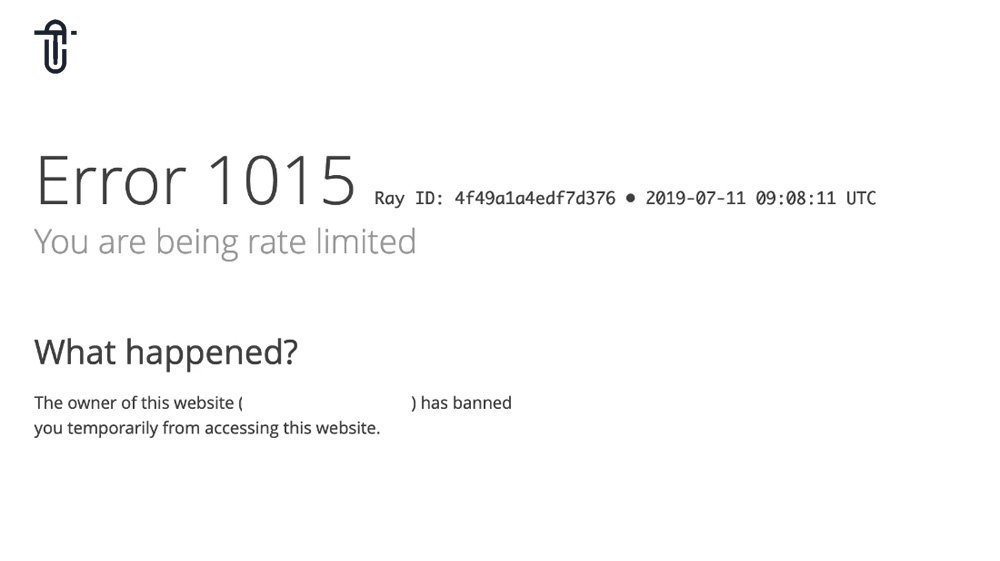Introduction
Fake hacking is a developing risk in cybercrime worldwide. Unlike actual hacking, which includes breaking into systems and stealing records, fake hacking is all about tricking people. It creates the illusion of a cyberattack to scare individuals or agencies into taking action, like paying cash or sharing sensitive records.
The purpose of faux hacking is to exploit human feelings, particularly worry and urgency. These attacks are frequently convincing and may cause quite a bit of pressure despite the fact that no actual hacking has taken place. Understanding how faux hacking works is fundamental to protecting yourself and your enterprise.
If you are interested in more tech Insights and news please checkout Timeschart.com
Definition of Fake Hacking
Fake hacking happens when someone pretends to hack your system to scare you into doing something they want. For example, you might get an email claiming your computer was hacked, and the attacker may demand money to “fix” the problem. In reality, your system is fine, and there was no hack at all.
Scammers use fake messages, alerts, or phone calls to make you believe the threat is real. They might show fake screenshots or send emails full of technical terms to confuse you. This is especially effective against people who don’t know much about cybersecurity. Fake hacking doesn’t involve breaking into your systems—it’s all about making you think they did.
How Does Fake Hacking Work?
Fake hacking works by using worry and deception. Attackers rely on making their messages look real, often pretending to be trusted corporations like banks or cybersecurity corporations. They create urgency, making you feel like you need to act fast.
For instance, you could acquire a pop-up warning announcing your laptop is infected with a plague. The pop-up might ask you to click a link or pay for faux antivirus software. Another example is receiving an email pronouncing hackers have stolen your facts and disturbing a ransom to avoid exposing it. These tricks are designed to make you panic and act without thinking.
Fake hacking often involves phishing emails, faux protection indicators, and even counterfeit calls from humans claiming to be IT experts. The attacker aims to scare you into paying money or sharing touchy information despite no real chance.
Exploiting Social Engineering Tactics
Social engineering is the key to fake hacking. It manipulates human beings by focusing on their emotions, like worry or consideration. Instead of hacking computer systems, attackers “hack” human behaviour.
For example, you might get an email announcing your bank account has been hacked and that you need to click on a hyperlink to secure it. If you click on the hyperlink, you could be taken to a fake website that steals your login info. Another common trick is a fake pop-up alert claiming your documents are encrypted and disturbing you to unencumbered them.
These methods work because they appear real and push you to behave quickly. Scammers use emblems, names, and technical phrases to make their messages appear sincere. By creating worry and urgency, they prevent you from questioning reality and the situation.
Even if an organization has strong cybersecurity gear, fake hacking can prevail if personnel don’t apprehend the tricks. That’s why it’s important to discover ways to spot these scams.
Motivations
Fake hacking is not random—it’s cautiously deliberate to attain particular goals. Here are the primary motives attackers use this technique:
Money Demands
The most commonplace purpose is money. Scammers create fake eventualities, like ransomware attacks, to trick sufferers into paying. For instance, they could claim they’ve stolen non-public files or hacked a webcam to record personal films. They then call for cash, frequently in cryptocurrency, to keep the statistics personal. Even though it’s all fake, many people pay out of fear.
Fear as a Motivator
Attackers recognize that worry can make humans act without thinking. They create a feeling of danger by threatening to delete vital statistics or disclose embarrassing ones. The fear of losing something valuable or adversely affecting one’s recognition makes victims much more likely to fall for the rip-off.
Enterprises as Targets
Organizations are frequently focused because they have more to lose. A fake hacking email might declare that purchaser information has been stolen and ask for payment to prevent it from being leaked. Even without proof, agencies may also pay to avoid criminal problems, bad publicity, or lack of patron agreement. Scammers take advantage of this fear to pressure companies into acting quickly.
By understanding those motivations, you can better protect yourself and your business from falling victim to faux hacking scams. Remember, the key to warding off these hints is to stay calm, verify the risk, and never act out of worry.
Signs to Identify Fake Hacking
Money Demands
One of the most apparent signs and symptoms of faux hacking is a call for cash, frequently offered as a ransom. Attackers could claim they’ve stolen sensitive information or encrypted your documents, worrying about a charge to “repair” the trouble. These needs are generally in cryptocurrency, making them tough to hint at. If you haven’t observed any uncommon pastime on your device, such demands are, in all likelihood, a scam. Always confirm earlier than paying.
Lack of System Changes
A key characteristic of fake hacking is that no adjustments arise in your system. Your documents are still on hand, your accounts remain stable, and your computer features are normal. Real hacking typically leaves signs and symptoms, including locked files, missing information, or unauthorized account activity. The threat is probably fake if the system runs smoothly.
Poor Organization
Fake hacking messages frequently have inconsistencies or errors. You might be aware of spelling mistakes, odd formatting, or a loss of technical element in the communication. Attackers can also use popular greetings like “Dear User” in preference to addressing you by calling. Real cybersecurity alerts are expert and specific, while fake ones frequently seem rushed or sloppy.
By keeping watching, you can better identicanehighlybetterone is attempting to scare you with a fake hacking attempt.
How to Deal with a Fake Hacking Attack
If you suspect you are experiencing a fake hacking assault, staying calm and taking the proper steps is critical. Acting out of fear can worsen the situation, so comply with those suggestions to handle the situation efficiently.
Check Before You Act
Before responding to any hacking, declare and affirm the facts. Look for symptoms of actual hacking, consisting of uncommon account interest, locked documents, or system errors. Don’t click on hyperlinks or download attachments if you obtained an email or message. Instead, contact your IT branch, cybersecurity provider, or the agency noted in the message to affirm if the risk is real.
Scammers rely on growing urgency, so take it slow to analyze. Search online for comparable scams to see if others have suggested the equal tactic. Many fake hacking schemes are broadly documented, and a quick search can confirm if it’s a known rip-off.
Employ an Ex-Hacker
Hiring a cybersecurity professional, especially one who enjoys hacking or countering hacking strategies, can be a game-changer. These specialists understand how attackers think and might quickly determine whether a threat is real or fake. They can also help steady your systems and educate you on how to avoid future scams.
Contact a trusted cybersecurity carrier if hiring an expert isn’t an option. Many agencies offer low-cost consultations and machine scans to ensure your data is secure.
Get Clued Up
Educating yourself and your team is one of the high-quality defenses against faux hacking. Learn about not unusual scams, how they work, and what signs and symptoms to look for. Regular training on cybersecurity will let you and others stay alert and avoid falling for scams.
Consider practising scenarios with your personnel or circle of relatives contributors, such as spotting phishing emails or managing suspicious pop-ups. This proactive technique builds self-assurance and reduces the danger of being tricked.
How to Prevent Fake Attacks: 2 Effective Steps
Preventing fake hacking attacks calls for a proactive method. These assaults exploit human behaviour and machine vulnerabilities, so specializing in education and visibility can assist in guarding your corporation. Here are two effective steps you can take:
Step #1: Employee Training
Educating employees is crucial because fake hacking often targets humans, not systems. Attackers rely upon social engineering to trick individuals into making errors, such as sharing sensitive facts or clicking on malicious hyperlinks.
1. Social Engineering Simulations
Running everyday social engineering simulations can assist employees in apprehending and responding to faux hacking attempts. For example, sending mock phishing emails to test their cognizance can identify expertise gaps. Afterwards, you can provide remarks and schooling to ensure they recognize a way to avoid falling for similar scams in the future.
2. Framework for End-Users
A clean cybersecurity framework for cease-users can empower personnel to act expectantly in suspicious situations. This framework needs to consist of the following:
- Steps to verify suspicious emails or messages.
- Guidelines on reporting ability threats to IT groups.
- Regular updates on the modern-day cyber scams and a way to spot them.
By combining simulations with a strong framework, you create a way of life of awareness that makes it tougher for faux hacking assaults to prevail.
Step #2: System Visibility
Fake hacking flourishes on uncertainty. Gaining visibility into your systems helps you quickly differentiate between real and fake threats.
Gain Visibility with Tools Like Check Point’s Security CheckUp
Advanced tools like Check Point’s Security CheckUp let you screen your structures for vulnerabilities. These tools offer insights into potential weak points, ensuring no gaps are left for attackers to exploit.
System visibility also includes approaches to clean logs of personal interest, community site visitors, and document adjustments. When you can see precisely what’s happening inside your systems, it becomes less difficult to perceive when a threat is fake. Additionally, automatic indicators from dependable protection software can quickly detect and respond to suspicious hobbies quickly improving device visibility; you build strong protection in opposition to counterfeit hacking and cyber threats.
Conclusion
Fake hacking is a deceptive but preventable hazard. By understanding how it works and taking steps to understand and prevent it, you can protect yourself and your employer. Employee education and machine visibility are your strongest defences against these scams.
Remember, staying informed and proactive is fundamental. Educate your team, use dependable cybersecurity gear, and continually verify before performing. With those measures, you could stay one step ahead of attackers and maintain peace of mind.
FAQs
What is fake hacking?
Fake hacking occurs when a person pretends to hack into your systems to scare you into paying cash or sharing touchy records. Unlike real hacking, no machine breach takes place—it’s simply a psychological trick.
How does faux hacking work?
Fake hacking works by using fear and urgency to govern sufferers. Attackers send fake emails, pop-ups, or calls claiming a machine has been hacked, regularly demanding money to remedy the problem. Their purpose is to make you act without verifying the chance.
How do you understand faux hacking?
You can apprehend fake hacking by way of seeking out symptoms along with:
- Unusual money needs.
- No visible changes in your machine or documents.
- Poorly written messages or loss of technical info.
How to cope with a fake hacking attack?
To cope with faux hacking:
- Verify the hazard earlier than appearing.
- Avoid clicking on suspicious links or sharing sensitive records.
- Consult cybersecurity professionals if needed.
If you are interested in more tech insights please visit Timeschart.com!




